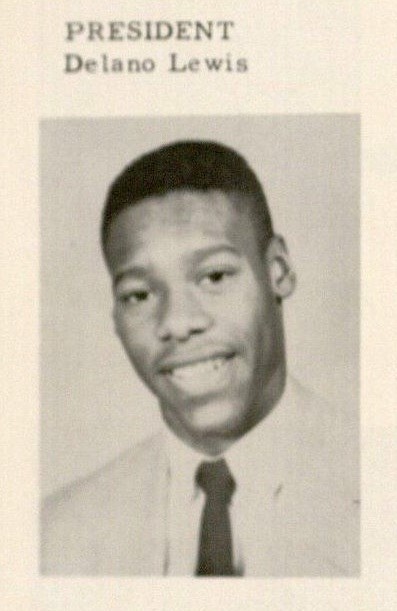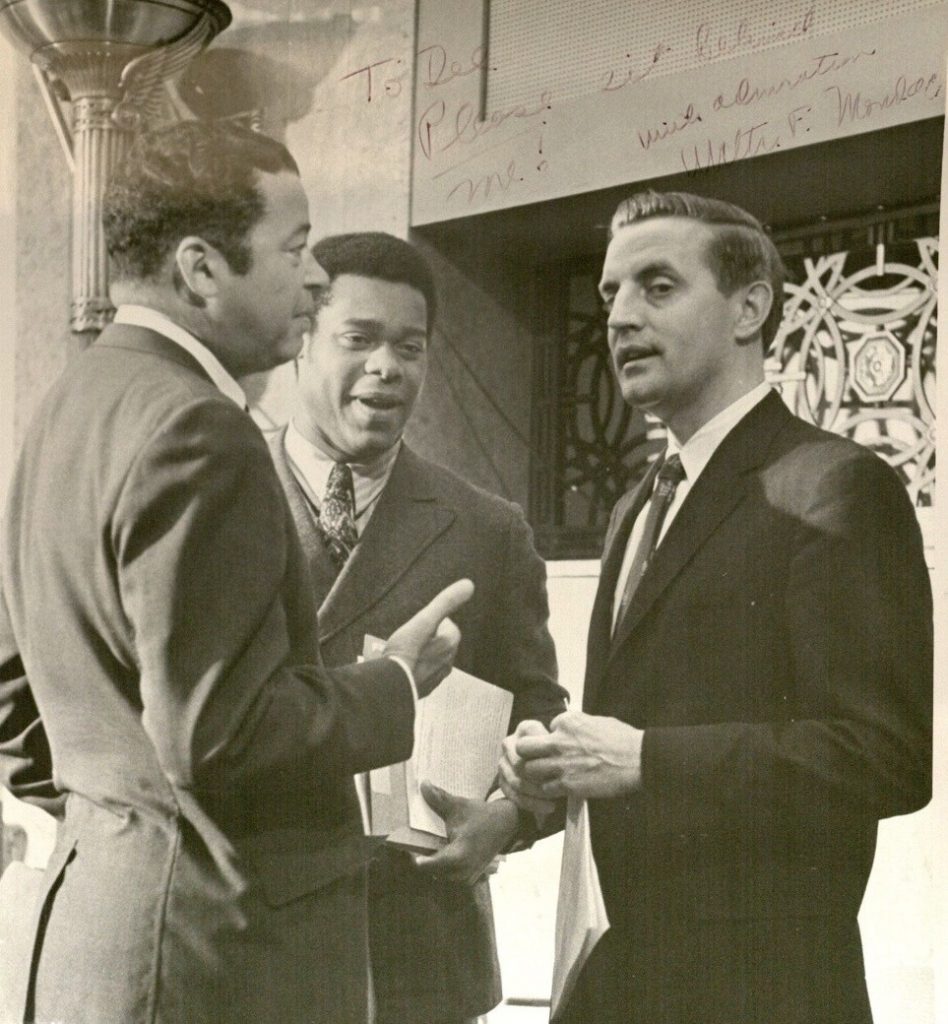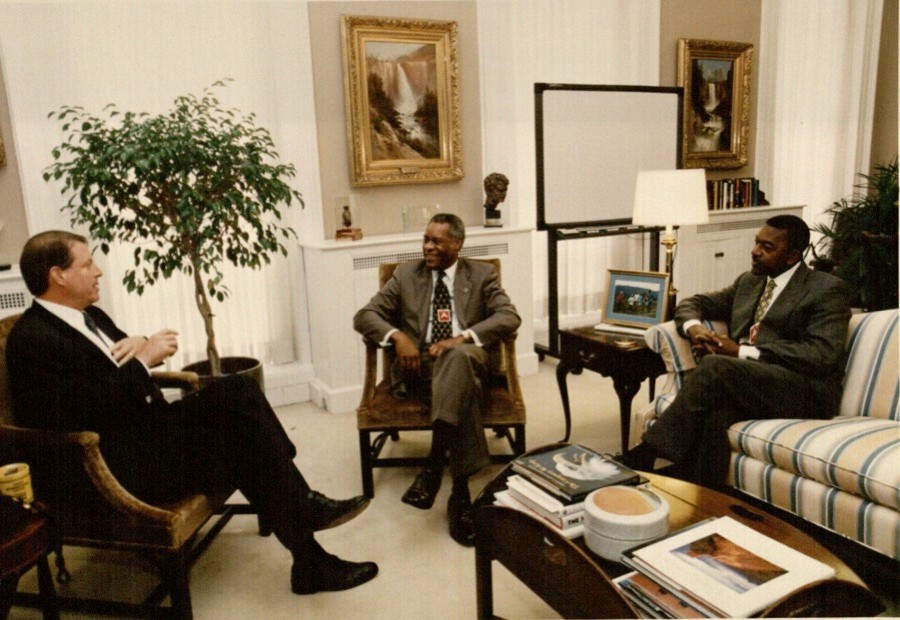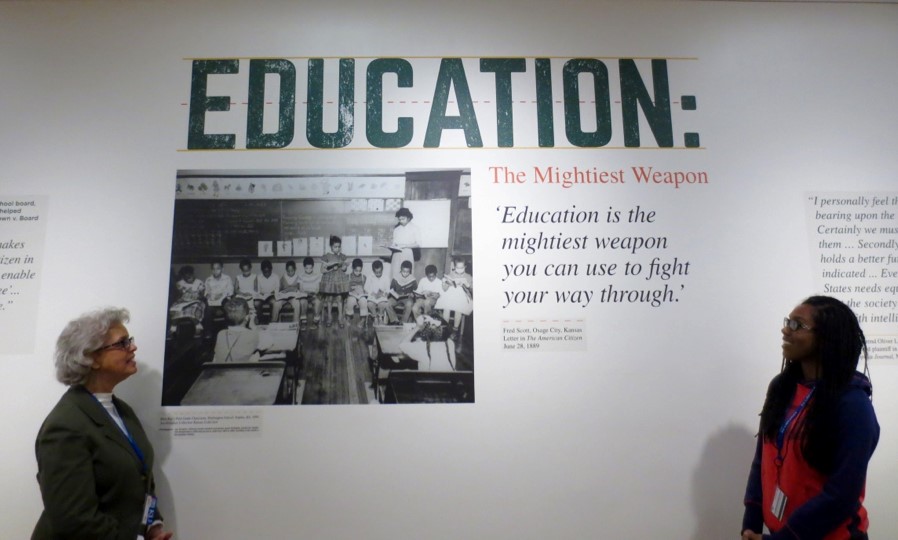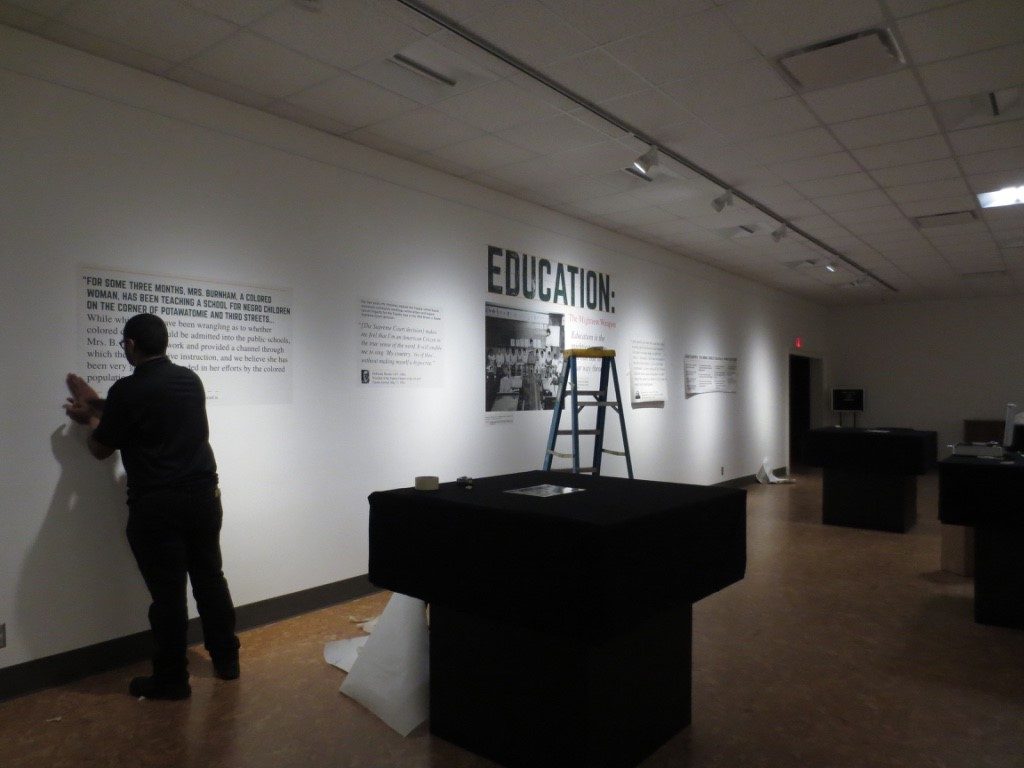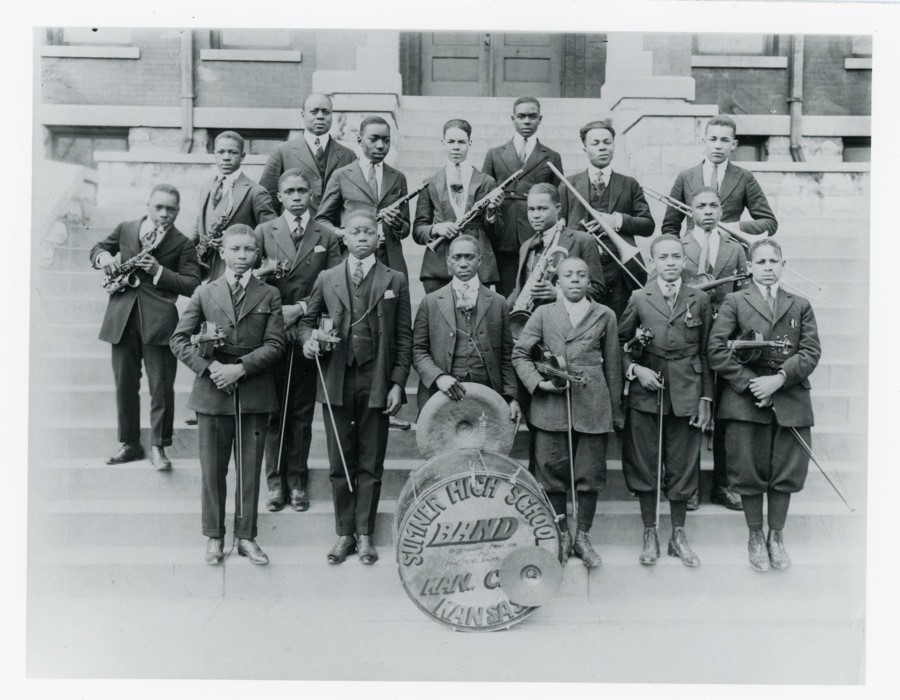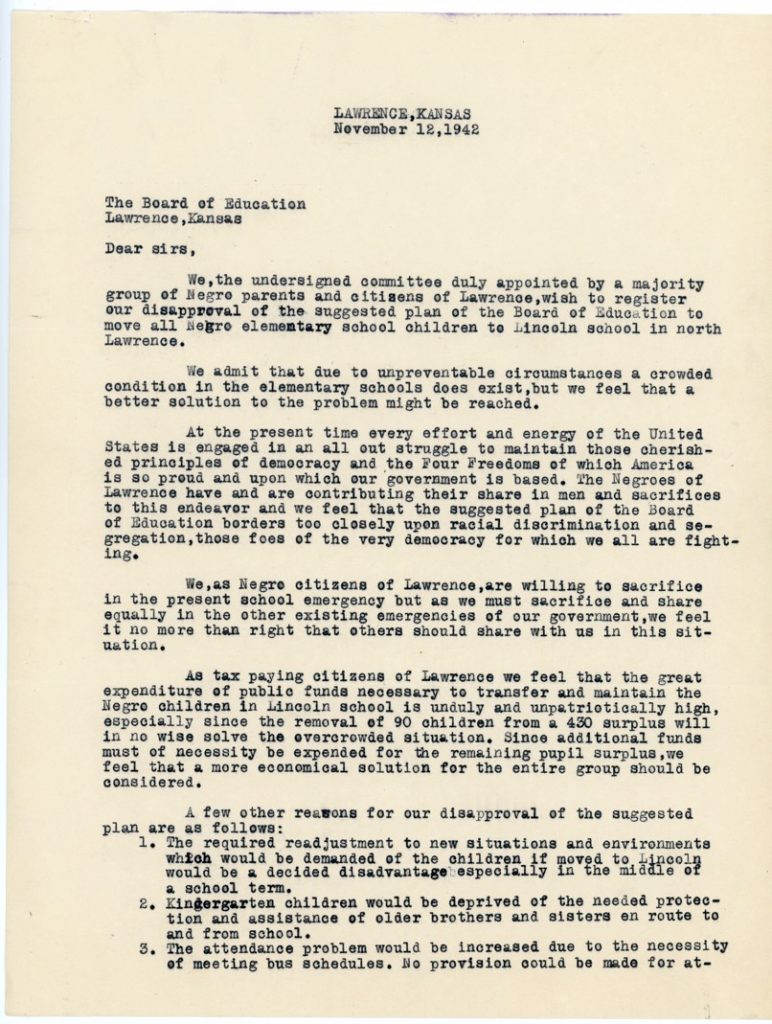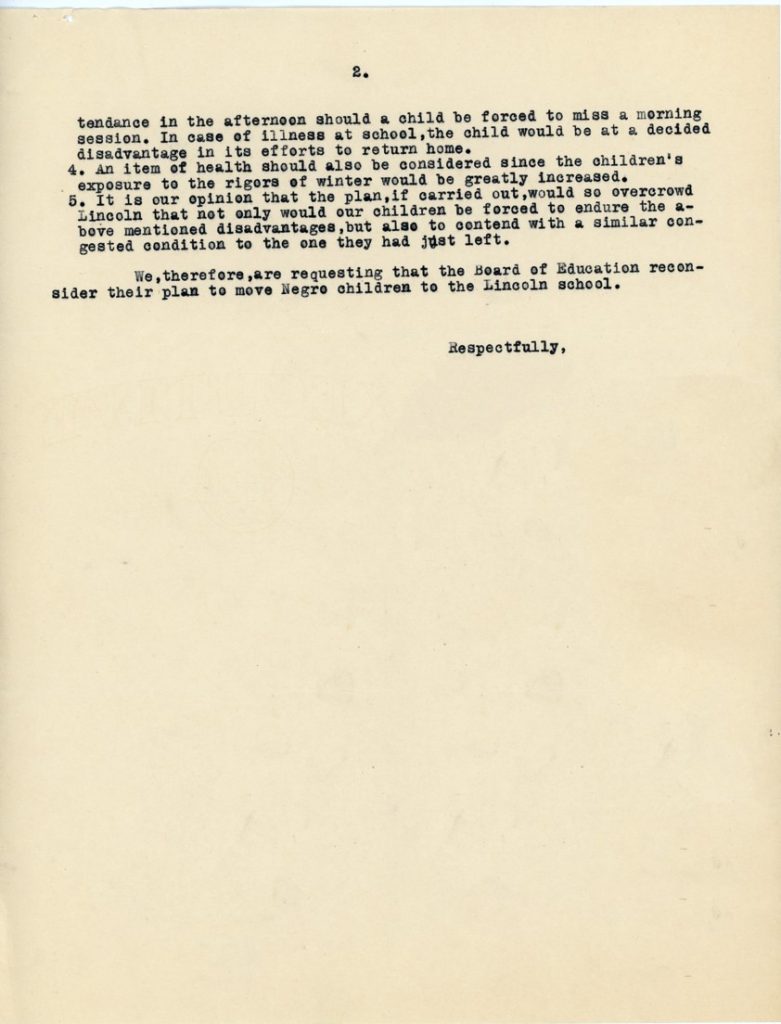Kansas Leader and Innovator: Delano Lewis
January 16th, 2018One of my first projects in the African American Experience Collections was to help the Field Archivist/Curator, Deborah Dandridge, put together an exhibit titled Education: The Mightiest Weapon. Many of the items that we used came from the Sumner High School Collection, and it didn’t take long for me to notice how accomplished the graduates of that school were. As coincidence would have it, one of my relatives, Delano Lewis, is a Sumner High graduate. Like many of Sumner’s graduates, he went on to accomplish great things like working as an attorney in the U.S. Justice Department, becoming Associate Director for the Peace Corps in Nigeria and Uganda, and being appointed as the United States Ambassador to South Africa.
Delano Eugene Lewis was born in November of 1938 in Arkansas City, Kansas. His family later moved to Kansas City, Kansas, where he attended Sumner High School, graduating in 1956.
Photograph in the 1956 Sumnerian yearbook showing
Delano Lewis (center) as a Drum Major at Sumner High School.
Call Number: RH Ser D1286. Click image to enlarge.
Sumnerian yearbook photograph of Delano Lewis,
President of the Junior Class of
Sumner High School, 1955.
Call Number: RH Ser D1286. Click image to enlarge.
Lewis graduated from the University of Kansas in 1960 with a Bachelor of Arts in Political Science and History. In 1963, he received his Doctorate of Jurisprudence from Washburn University School of Law, after which he went to Washington, D.C., to work as an attorney in the U.S. Department of Justice. In 1967 Lewis served as the Peace Corps’ Country Director in Uganda. After leaving Uganda, he worked as a Legal Assistant for Senator Edward Brooke (R-Mass.), the first African American elected to the U.S. Senate since Reconstruction.
Delano Lewis (center) with Senator Edward Brooke (left) and
Vice President Walter Mondale (right), undated photograph.
Delano Lewis Papers. Call Number: RH MS-P 1075.
Click image to enlarge.
While he held esteemed positions in service of the U.S. government, Lewis also had an impressive corporate career. He served as the Public Affairs Manager for the Chesapeake & Potomac Telephone Company in 1973, and in 1990 he became the CEO. In 1993, Lewis was the first African American become the President and CEO of National Public Radio. Then from 1999 to 2001, Lewis was appointed to be the U.S. Ambassador to South Africa.
Delano Lewis (center) with Vice President Al Gore (left), 1997.
Delano Lewis Papers. Call Number: RH MS-P 1075. Click image to enlarge.
Initially proposed and funded by Michael Shinn (B.S., Aerospace Engineering, 1966), the KU Black Alumni’s African American Leaders and Innovators project recognized Mr. Lewis in 2007.
Arielle Swopes
Spencer Research Library Student Assistant
African American Experience Collections
Deborah Dandridge
Field Archivist and Curator
African American Experience Collections


